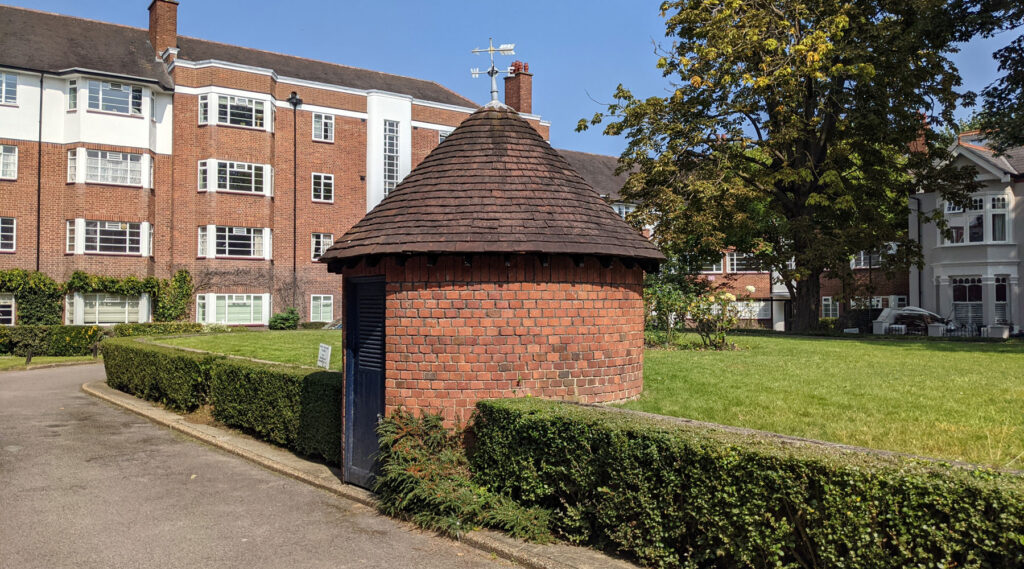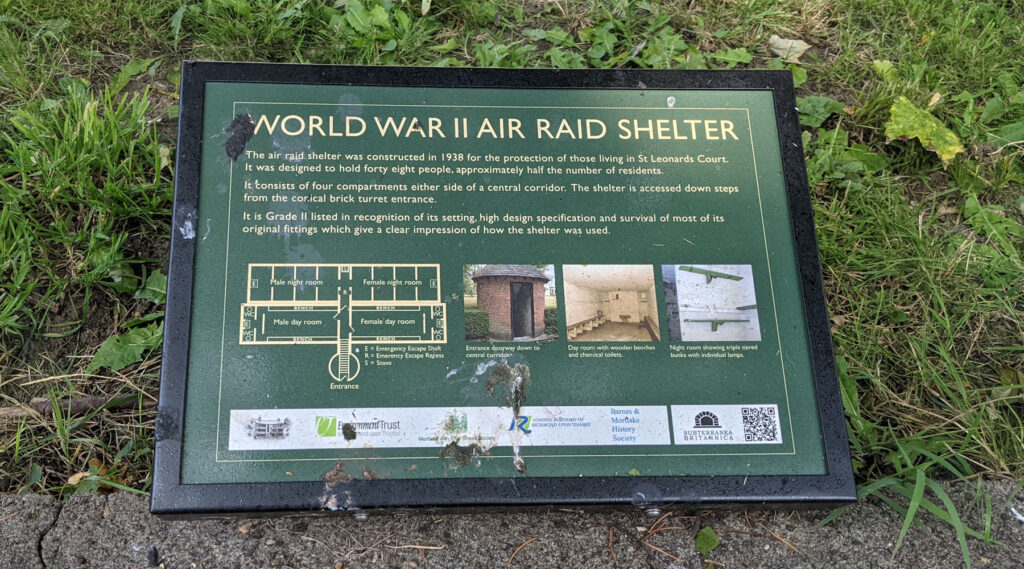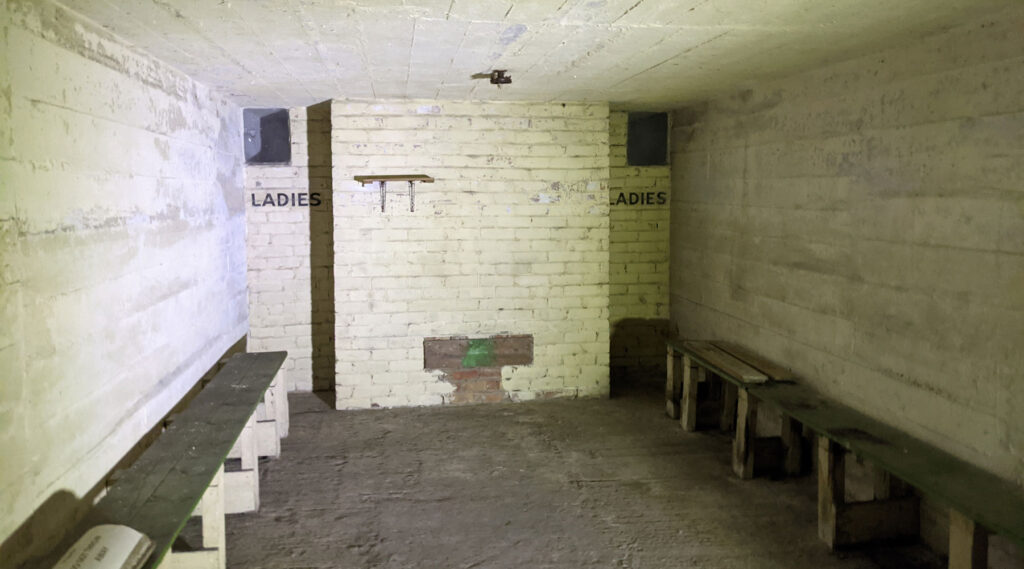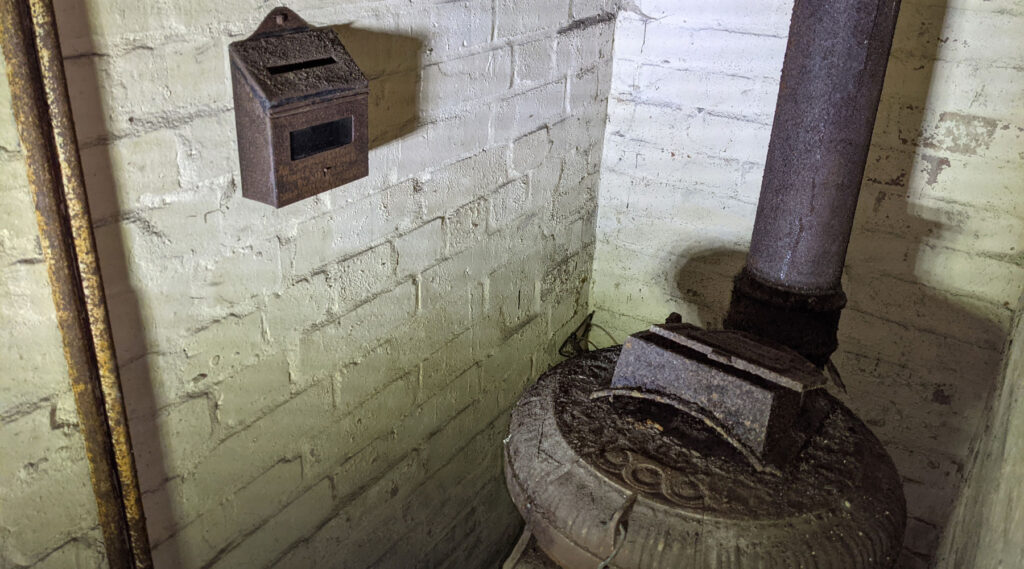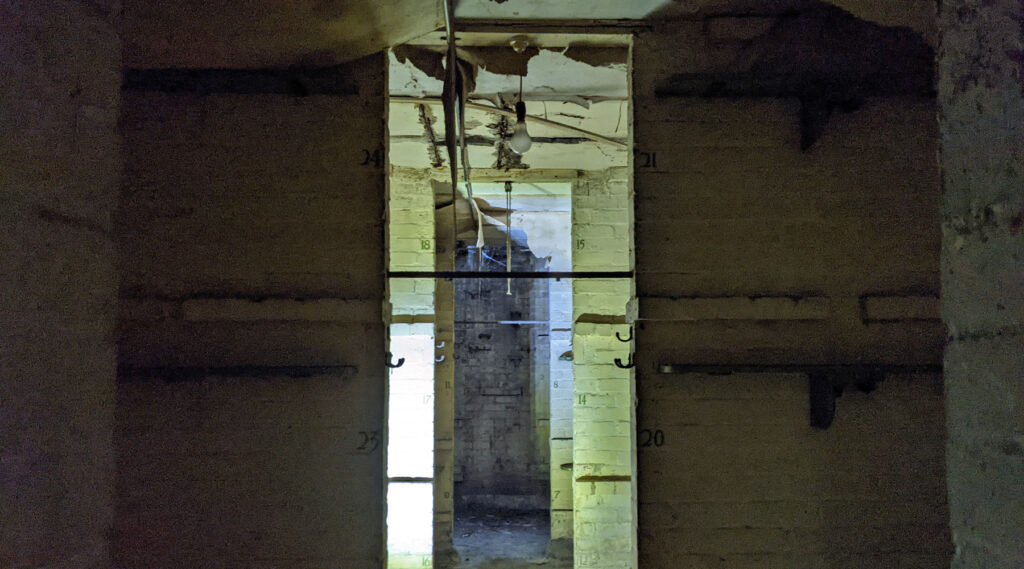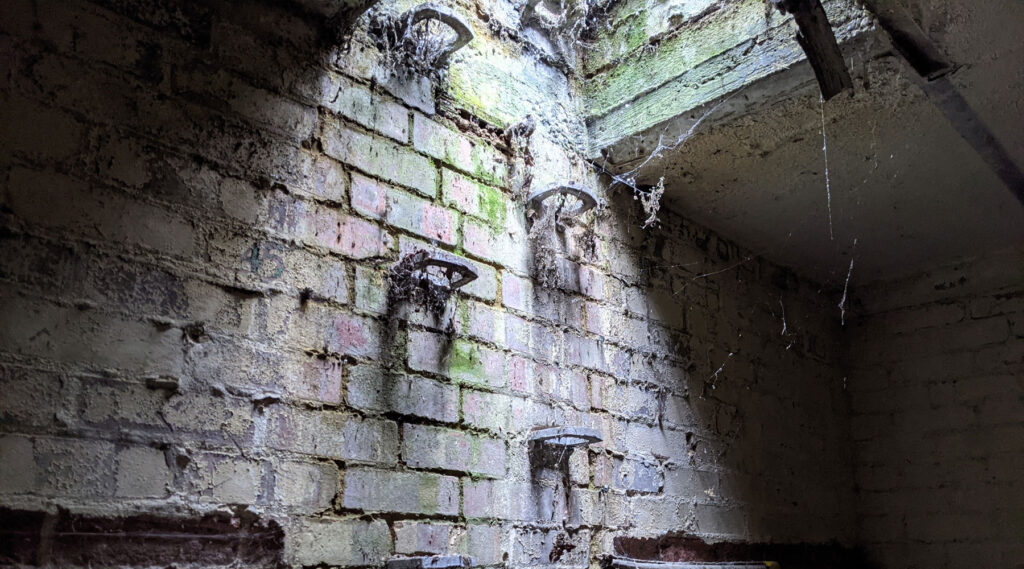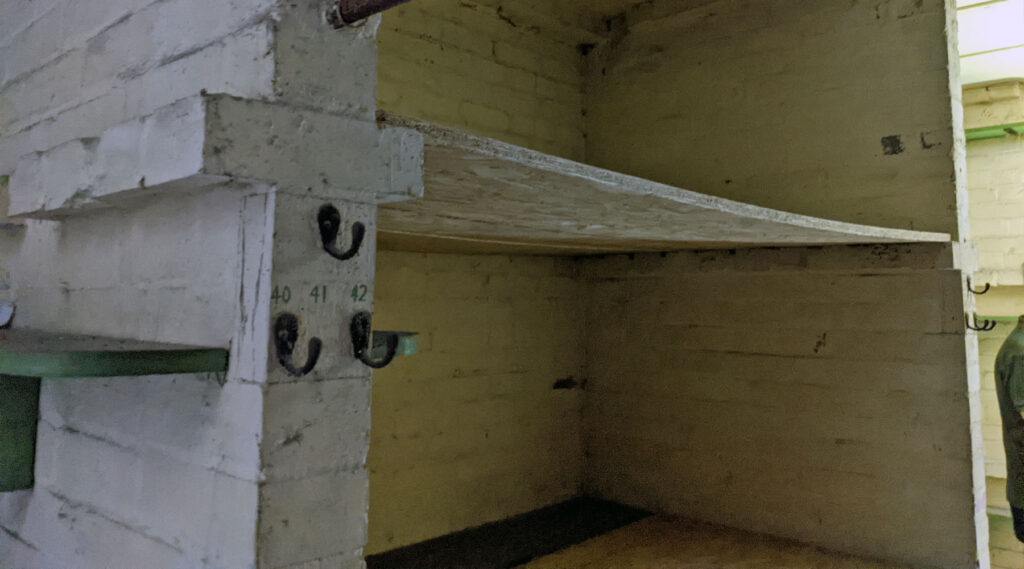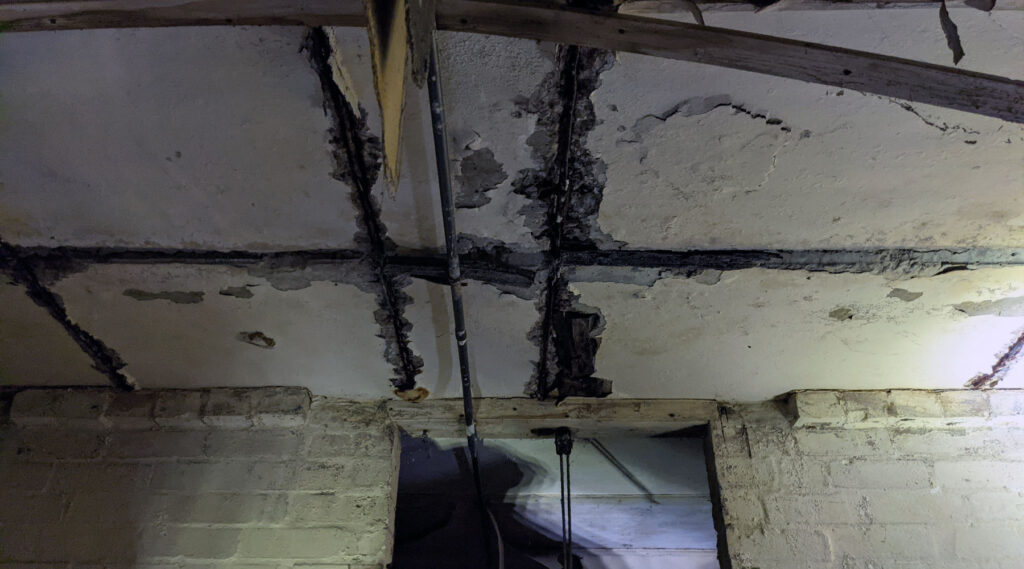On a side street not far from Mortlake station is a set of 1930s residential flats and in front a curious brick building – the entrance to an underground air-raid shelter.
The air-raid shelter was built in two stages, the first being a solid if simple couple of rooms with toilets for people to wait out the danger for a short while, but later as the war got worse, a second section was added for people to spend the whole night down here.
To build the shelter, the lawn in front of the flats was excavated down, and it seems likely that the excavated soil was then piled up on top to create additional protection as there’s a wall and deep hedge running around the site today. Entry is through a solidly locked door in a very back-garden style round brick shed with a tiled roof and then down a set of steps to the underground spaces.
There’s no lighting down here, so tours are illuminated by large portable floodlights.
The first two rooms are the first two to be built, in 1938, and are simple long rooms with a wall leading to a couple of chemical toilets — one room for men, and the other for ladies. The doors are offset so that if a bomb hits one room, the blast would be deflected slightly before hitting the next room.
It’s a very spartan space as you would expect, with just a few benches to sit on and a few dim light bulbs. During an air-raid, up to 120 people could have sat here, in the cold damp box hoping for the best while the smell of the acrid chemical toilets slowly filled the room.
As the intensity of bombing raids became more apparent, in 1941 it was decided to add a second row of rooms, and this time fitted for sleeping in.
You can clearly see how wartime shortages are already making themselves felt in the construction which is noticeably cheaper than the earlier part of the shelter. But, these two rooms were also much more luxurious for the residents.
Divided into cells, with three rows of double-width beds in each, it could hold 48 families – or more likely mothers and children — in the space.
By many shelter’s standards, this was a well-appointed space, as they still have the toilets to use (many asked you to bring a bucket), and each bed had its own lamp and switch so people could read without disturbing their neighbours. Residents of the flats had to pay £7 a year to be allowed to use the bunks, although with so many families in close proximity often chatting at night, it wasn’t an easy place to get some sleep and residents sometimes took their chances above ground.
There is one heater down here, roughly at the middle of the bunker, with quite delightfully middle-class, a post box for the porter to deliver any letters written while people sheltered from the bombs above.
The ends of the two sleeping quarters have emergency exits up ladders, and it’s thought that there may have been a surface structure during WW2, but it’s been lost now and secure glass lids let light down into the bunker instead.
Despite the damp and the decay of years, the carefully painted numbers on each bed-bunk are as crisp as when first painted, and each bunk had its own carefully numbered coat hook.
The air-raid shelter was used for some time after the war as storage by the people who lived in the flats, which seems so eminently sensible an idea that it’s a surprise that it wasn’t converted professionally into fixed storage units. That failure is our good luck though, as it means a lot of original fittings are still intact.
The heritage charity looking after the bunker is currently working on a plan to stabilize the structure, and the damp is having an effect on the steel-reinforced concrete and starting to rust the metal bars. They are fundraising for that work to be carried out.
Tours don’t happen that often as the air-raid shelter sits in a residential estate. This visit was part of Open House London, and is also opened for local school visits.

